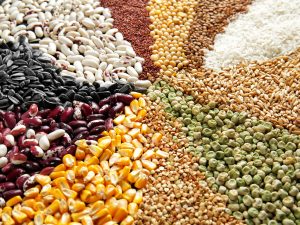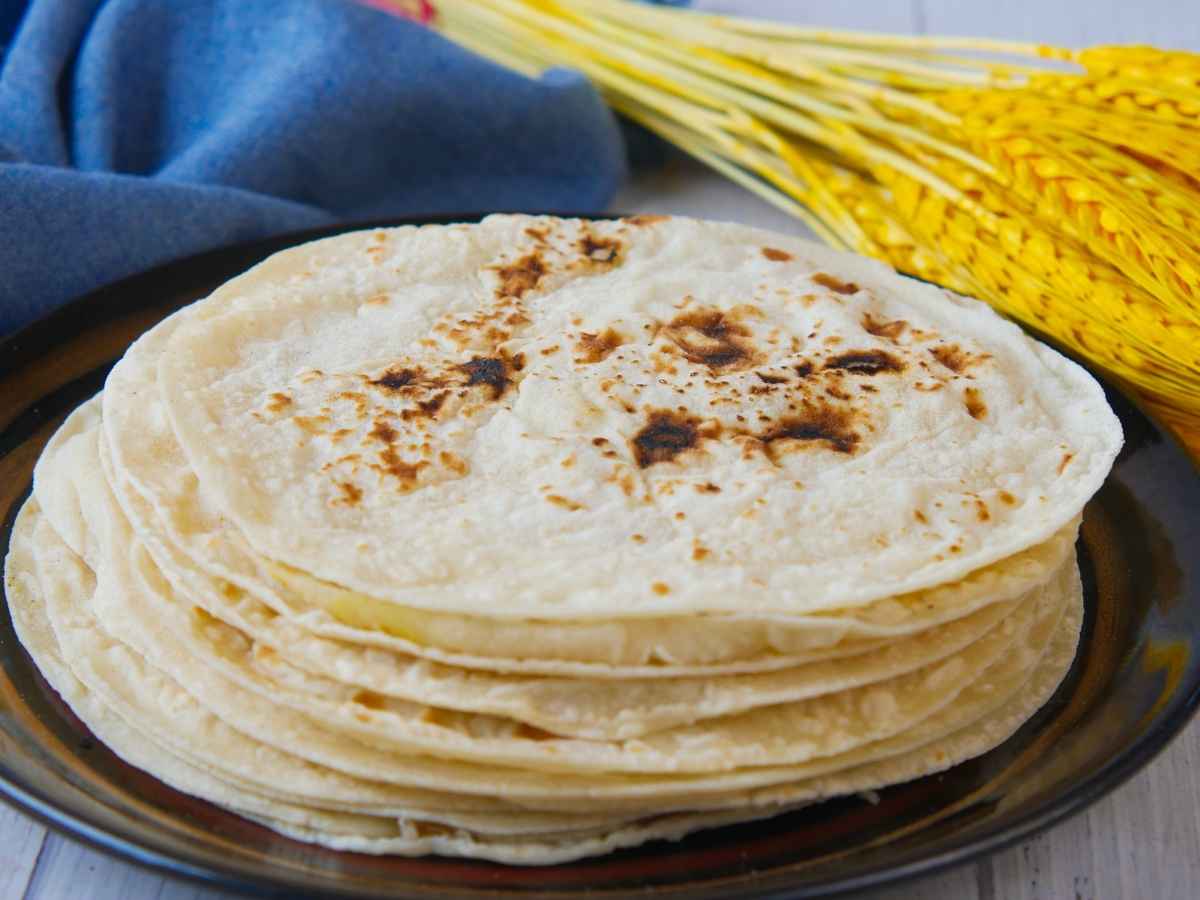Roti, also known as chapati, is a beloved flatbread consumed across South Asia and beyond. Made traditionally from whole wheat flour (atta), roti is not only a comfort food but also a nutritional powerhouse when prepared mindfully.
Whether you’re seeking fiber-rich carbs, a gluten-free alternative, or a simple, satisfying side to your meals, roti offers versatility, health, and flavour in every bite.
Why Roti is a Healthy Choice
1. Rich in Dietary Fiber
Whole wheat roti contains a good amount of fiber which supports digestion, regulates blood sugar, and promotes a feeling of fullness. This makes it particularly beneficial for weight management and gut health.
2. Low in Calories (Compared to Alternatives)
A medium-sized roti (around 40g) contains approximately 110–120 kcal, fewer than naan or paratha, making it ideal for calorie-conscious eaters.
3. Sustained Energy from Complex Carbohydrates
Roti provides complex carbs that release energy slowly. This helps maintain stable blood sugar—great for diabetics and those looking to avoid energy crashes.
4. Good for Heart Health
Whole wheat includes magnesium, fiber, and antioxidants, all of which can reduce the risk of cardiovascular diseases and manage cholesterol levels.
5. Packed with Essential Nutrients
Roti offers iron, magnesium, potassium, B vitamins (niacin, thiamine, folate), and a touch of protein—important for immunity, bone health, and energy production.
6. Naturally Low in Fat
Unless fried in oil or smeared with butter, roti is a low-fat food, perfect for everyday consumption.
7. Vegan & Vegetarian Friendly
Made from plant-based ingredients, roti fits well into vegetarian and vegan diets.
Nutritional Value of One Medium Roti (Approx. 40g)
| Nutrient | Value |
|---|---|
| Calories | 110–120 kcal |
| Carbohydrates | 20–22 g |
| Protein | 3–4 g |
| Fat | 1–2 g |
| Fiber | 2–3 g |
| Iron | 0.7–1 mg |
| Magnesium | ~40 mg |
| Sodium | Very low |
Note: Nutritional values vary depending on flour type, thickness, and added fats.
Tips for Healthier Rotis
-
Use 100% whole wheat or blend with flours like jowar, ragi, or bajra.
-
Skip oil/ghee for lower fat versions.
-
Pair with protein-rich dishes like dal, paneer, or chana for a balanced meal.
-
Add purees like spinach or beetroot for an extra nutrient boost.
Roti vs Rice vs Bread: A Nutritional Showdown
| Feature / Food | Roti (Whole Wheat) | White Rice | White Bread |
|---|---|---|---|
| Calories | 110–120 per roti | ~130 per ½ cup | ~70–80 per slice |
| Carbs | 20–22 g | 28–30 g | 13–15 g |
| Protein | 3–4 g | 2–3 g | 2–3 g |
| Fiber | 2–3 g | <1 g | <1 g |
| Glycemic Index | Low-Medium (55–60) | High (70–90) | High (70+) |
| Fat | 1–2 g | <1 g | 1–2 g |
| Nutrient Density | High | Low | Low |
| Satiety Level | High | Moderate | Low |
| Processing Level | Minimal | Moderate (polished) | High (refined) |
Verdict:
-
For blood sugar control and fiber: Choose roti.
-
For quick energy: White rice.
-
For convenience (less nutrition): Bread.
Explore the Diversity: Different Types of Roti
By Flour Type

-
Whole Wheat Roti (Chapati): Balanced nutrition and easy to digest.
-
Bajra Roti (Pearl Millet): High in fiber and warming for winter.
-
Jowar Roti (Sorghum): Gluten-free and antioxidant-rich.
-
Ragi Roti (Finger Millet): High in calcium, ideal for bone health.
-
Makki di Roti (Maize): A Punjabi winter staple.
-
Besan Roti (Gram Flour): High protein and gluten-free.
-
Multigrain Roti: A nutritious blend of flours like atta, ragi, oats, soy.
By Region or Specialty
-
Phulka: Soft, oil-free, and perfect for calorie control.
-
Thepla: Spiced Gujarati roti with methi and turmeric.
-
Missi Roti: Spiced wheat-besan mix, full of flavor.
-
Rumali Roti: Thin, restaurant-style roti.
-
Tandoori Roti: Smoky, clay oven-cooked.
-
Thalipeeth: Maharashtrian multi-grain roti with veggies.
-
Akki Roti: South Indian rice flour version.
Gluten-Free Roti Alternatives
For those avoiding gluten, here are the best naturally gluten-free options:
-
Jowar Roti – Sorghum-based, good for digestion and heart health.
-
Bajra Roti – Dense and mineral-rich.
-
Ragi Roti – Great calcium source.
-
Akki Roti – Made with rice flour, often spiced with onions and chilies.
-
Rajgira Roti – Amaranth flour, protein and calcium-rich.
-
Singhara Roti – Water chestnut flour, light and cooling.
-
Kuttu Roti – Buckwheat flour, great for fasting and gut health.
Tips for Making Soft Gluten-Free Rotis
-
Use warm water and knead well.
-
Add binding agents like mashed potatoes or arrowroot.
-
Shape by hand instead of rolling.
-
Cook on non-stick or cast iron pan and keep covered for softness.
📌 Final Thoughts
Whether you stick to classic wheat rotis or explore gluten-free alternatives, this humble flatbread can be a cornerstone of a wholesome, balanced diet. At Community Kitchen, we celebrate traditional food made healthy—keeping taste, nutrition, and affordability at the core of our values.



